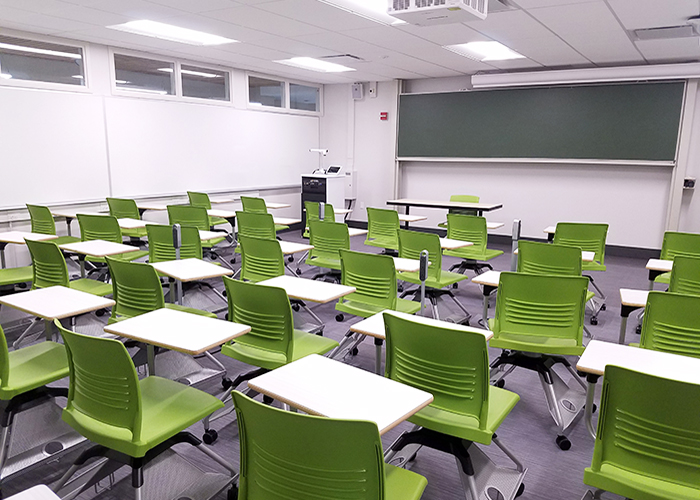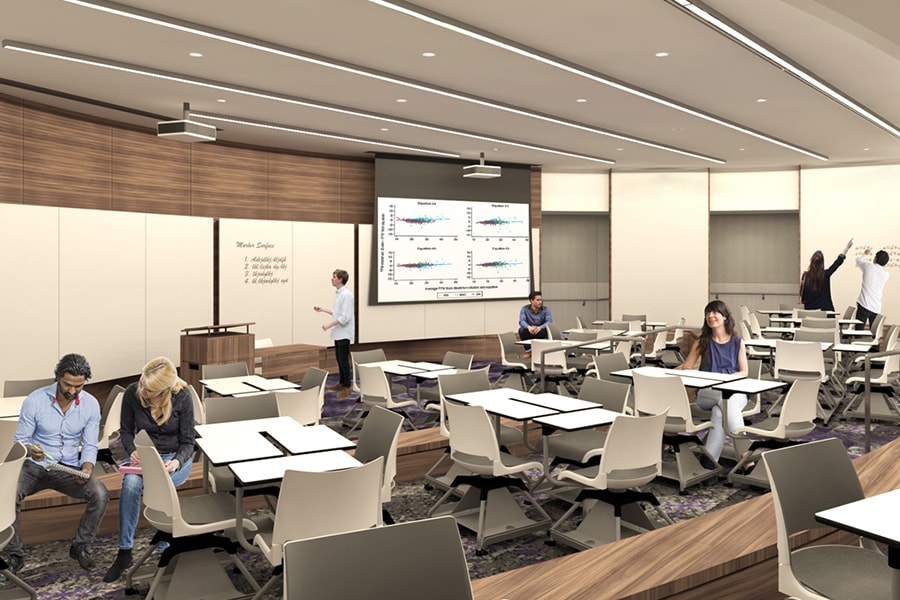Making the Most of Your Upgraded CMU Classroom
CMU’s $20M Classroom and Learning Spaces Project is updating and redesigning CMU classrooms based on data collected by the Eberly Center and the research on learning science and technology-enhanced education. The redesigns have included new and flexible furnishing, technology upgrades, and better lighting and acoustics to improve classroom function and accessibility. Not only will these improvements allow for a more pleasant educational experience, but they also offer many possibilities for instructors to enhance student learning through evidence-based strategies, such as active learning (see Freeman et al. 2014). Here are just a couple of ideas that you might consider to leverage the new features of these classrooms:
Moveable furniture facilitates active learning and group work

Instead of lecturing for the whole 50-minute class period, an economics instructor decides to incorporate 5-minute mini case study breaks after each of the main topics for that class period. After finishing a topic, he asks students to move into small groups to work through a concrete application problem projected on the screen. The students quickly put their desks together, giving them both ample space and opportunity to collaborate freely on the scenario at hand for 3 minutes. The instructor then takes 2 minutes to have a few groups share their responses and to highlight the main principles illustrated by that example.
Audio-visual equipment fosters collaborative learning and feedback

An instructor leading a physics recitation section of about 25 wants to give students the opportunity to learn from each other’s work, as well as address common errors. Every class she chooses three students to share their homework either singly on the DocCam or concurrently on one of the many whiteboards. The class divides into three groups, each with one of the students leading, and they talk through the problem and that sample work. The instructor gives them specific questions to answer (What are the main principles underlying this problem? What parts did you struggle with? Are there any places where the student’s work could be improved? How would you represent this solution graphically?), allowing both the leading student and collaborators to identify the difficult and most salient parts of the problem and associated concepts. This approach also ensures that students regularly receive in-depth and productive feedback while practicing their communication skills.
For more ideas on how to take advantage of your new classroom, set up a 1-on-1 consult with us!
Freeman, S.; Eddy, S.L.; McDonough, M.; Smith, M.K.; Okoroafor, N.; Jordt, H.; Wenderoth, M.P. (2014). Active Learning Increases Student Performance in Science, Engineering, and Mathematics. PNAS. 111(23), 8410-8415.